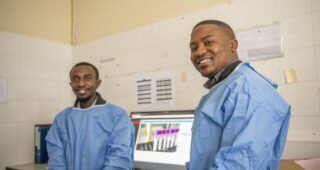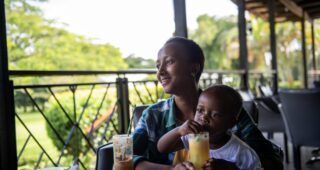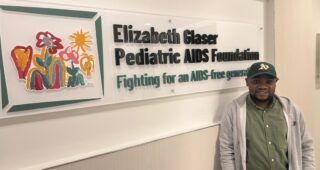Our Voices in the Fight: Empowering Youth

In our latest installment of the “Our Voices in the Fight” series, EGPAF sits down for a Q&A with Angel Brown the senior program manager for gay, lesbian, bisexual, transgender, and questioning (GLBTQ) health and rights at Advocates for Youth. Read on to learn Angel’s take on how HIV/AIDS impacts minority teenagers in Washington, D.C.
How would you describe your role as a GLBTQ health and rights program manager at Advocates for Youth?
In my position, I build the capacity of individuals, organizations, state, and local institutions (such as school districts) to improve the sexual health and quality of life for GLBTQ young people.
I help organizations assess and implement HIV, sexually transmitted infections (STIs), and teen pregnancy prevention programming for GLBTQ youth. I work with adult providers to create safe spaces for GLBTQ youth and provide strategic technical assistance and training within communities to address homophobia and transphobia. Much of my work is within communities of color since GLBTQ youth of color are often faced with exceptional life challenges.
Most importantly, I work with a group of GLBTQ youth leaders to build their skills and capacity so that they may be among the next generation of national leaders in the United States.
Why do you think HIV/AIDS Awareness efforts are especially important for African-American youth and other minorities?
We have an alarming health issue on our hands. According to the U.S. Centers for Disease Control and Prevention (CDC), nearly 26 percent of all new HIV infections occur among young people ages 13 to 24 years old. Of those new infections, African-American youth represent approximately 60 percent of newly diagnosed young people. Among young people, African-American youth are being diagnosed with HIV far more frequently than their Latino and white counterparts and more than half (54 percent) of all new HIV infections among young gay and bisexual males occur in African-American young men.
Our proverbial house is on fire and our young people need us. We must address the needs of all youth, especially African-Americans, as they are repeatedly at disproportionate risk for negative health outcomes—particularly when it comes to HIV.
Young people can make healthy decisions regarding their sexual health when they have the proper support, resources, skills, and guidance that adults should provide. They deserve to have educators that can effectively teach the sex education curricula along with access to youth friendly, culturally appropriate sexual and reproductive services that meet their unique needs.
What are the main challenges you face when talking to young people about HIV/AIDS?
Often, youth are not the challenge. Young people are like sponges. They are hungry and ready for the knowledge needed to live healthy lives. My biggest challenge is often the adults in the lives of the young people that I work with, who do not believe young people havethe right to access sexual health information or that society has a responsibility to provide it. In my experience, many adults believe talking to youth about sex and sexuality is harmful.
Adults have a responsibility to provide young people with the tools they need to safeguard their sexual health. When we shift our thinking about young people and their sexual health rights, we will begin to see the AIDS-free generation that we hope for.
What can be done to reduce stigma associated with HIV? Do you believe that stigma is compounded for HIV-positive GLBTQ teens?
Stigma kills. It causes silence and fear, leaving many youth living with HIV alone in the shadows of our communities. Silence and fear ultimately lead to death, and we owe our young people–our children–more than that. We must invest special time, energy, and care in their lives because they are often experiencing a myriad of stigma and oppression. All youth deserve to live safe and healthy lives.
How can teens make a difference in the fight against HIV/AIDS?
This may sound cliché, but knowledge truly is power. There was so much that I didn’t know before becoming a peer educator, but you develop a sense of responsibility to help and change lives. Working to put an end to new HIV infections and to improve the quality of life for those living with HIV is one of the most beautiful ways to bring about change in the world.
Young people can seek out and join local programs that offer HIV, sexual, and reproductive health training. They can volunteer at local community centers and hospices that serve individuals living with HIV. After learning about HIV, they can share prevention, care, and treatment messages among their friends, at their schools, and within their communities. Lastly, they can mobilize around HIV/AIDS awareness days such as National Youth HIV & AIDS Awareness Day (NYHAAD).
Interested in learning more about Advocates for Youth? ? Visit its website to discover how you can get involved. Stay tuned throughout February for more installments of the Elizabeth Glaser Pediatric AIDS Foundation’s Black History Month series, “Our Voices in the Fight.”
EGPAF
General



